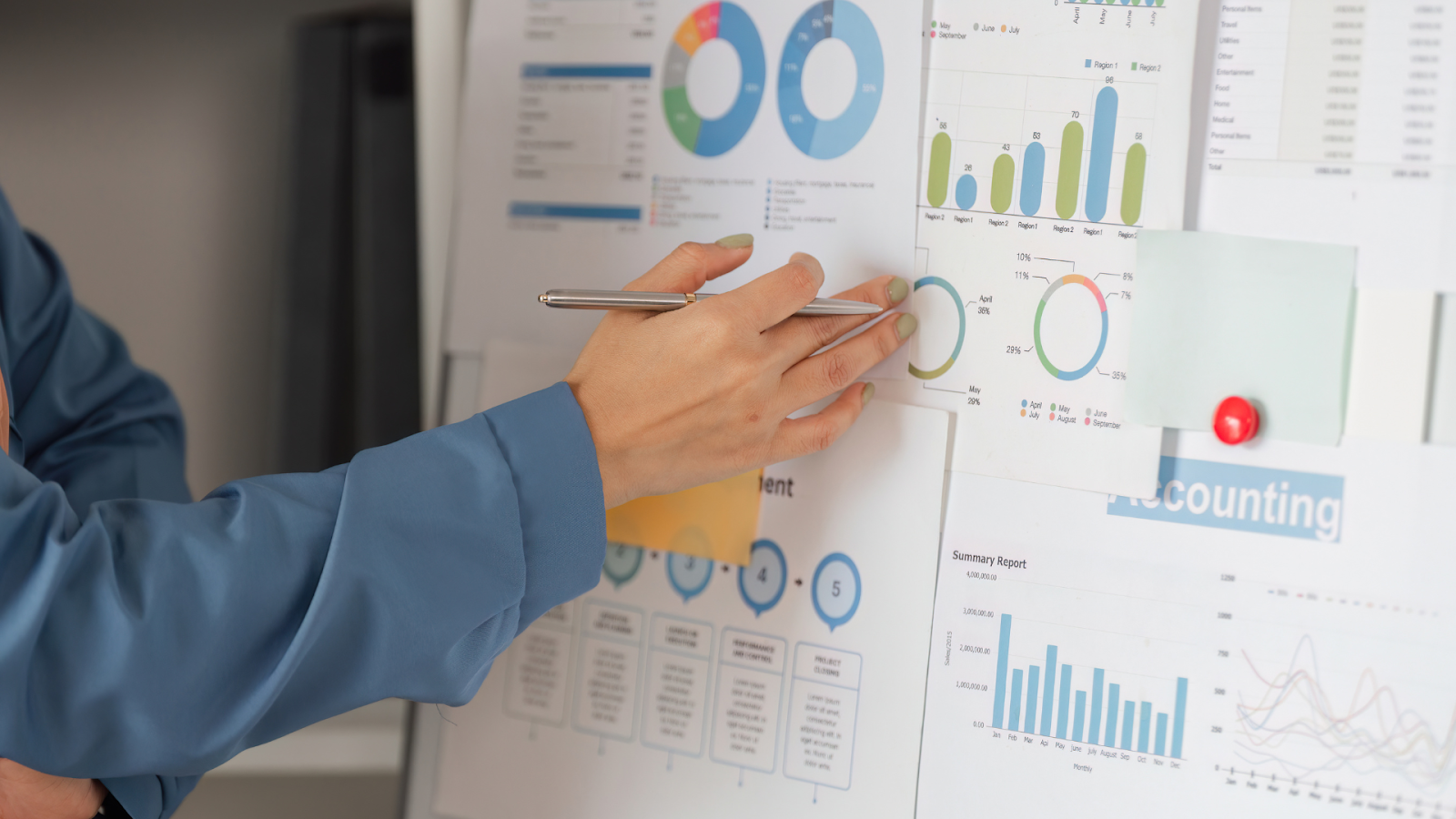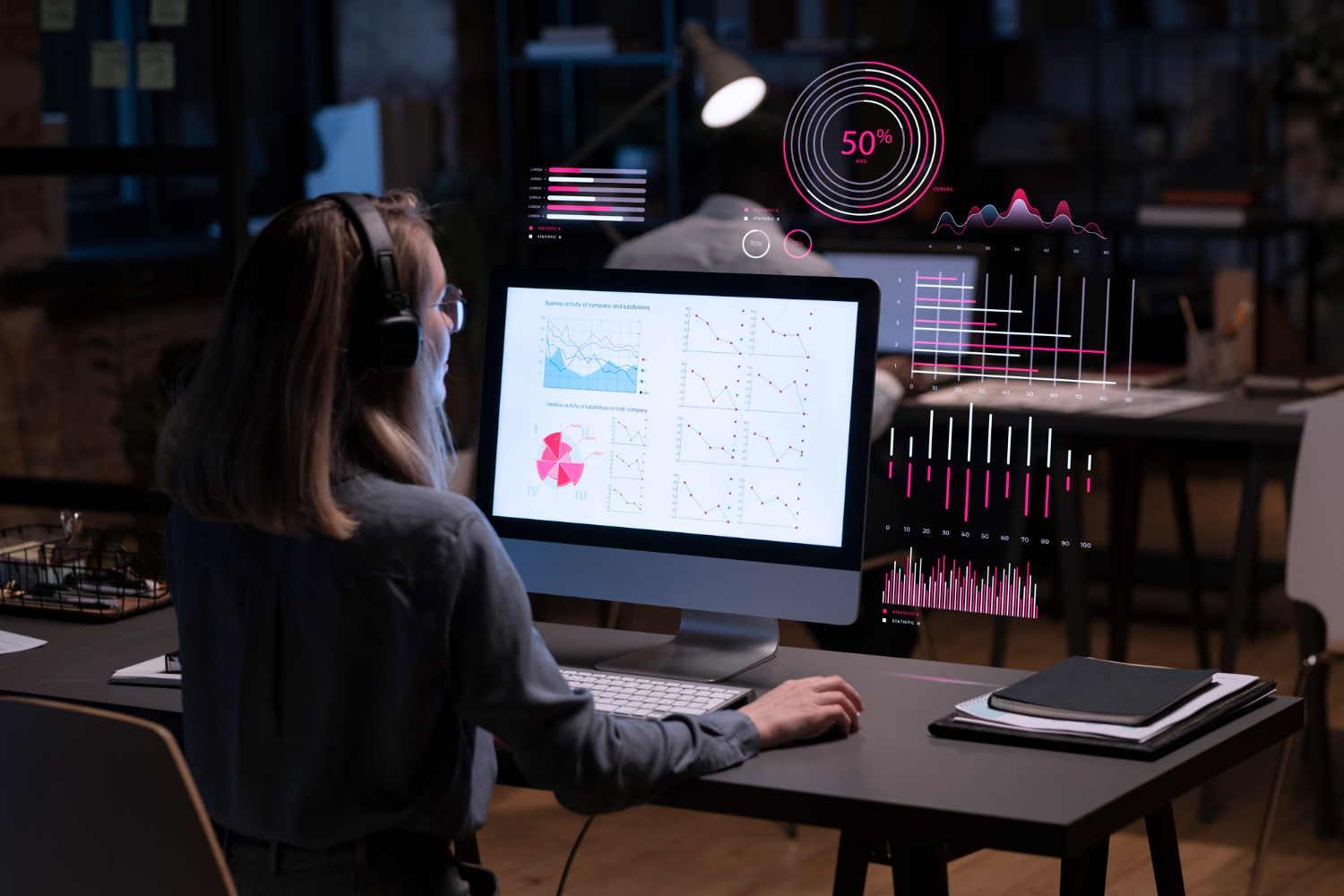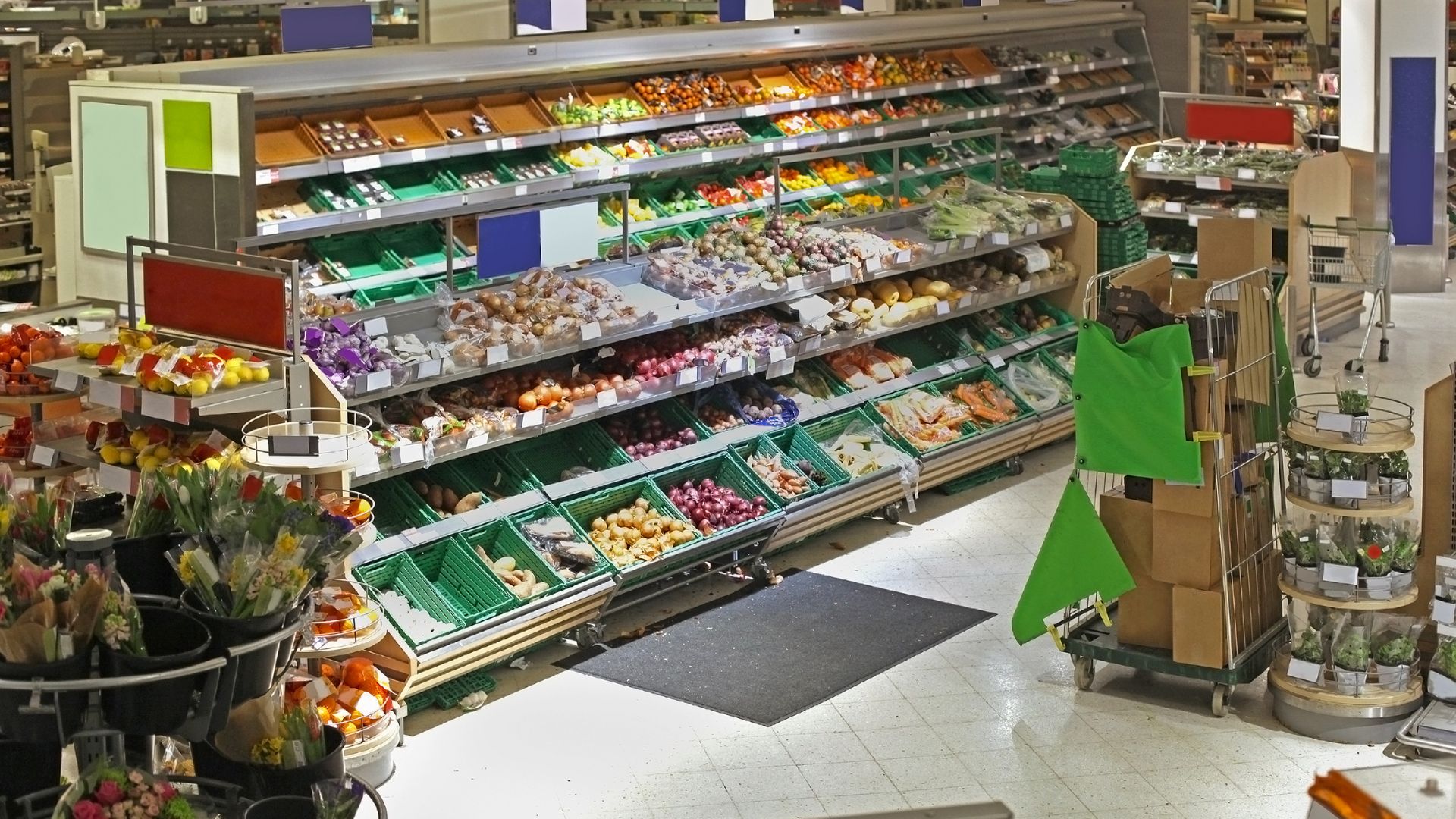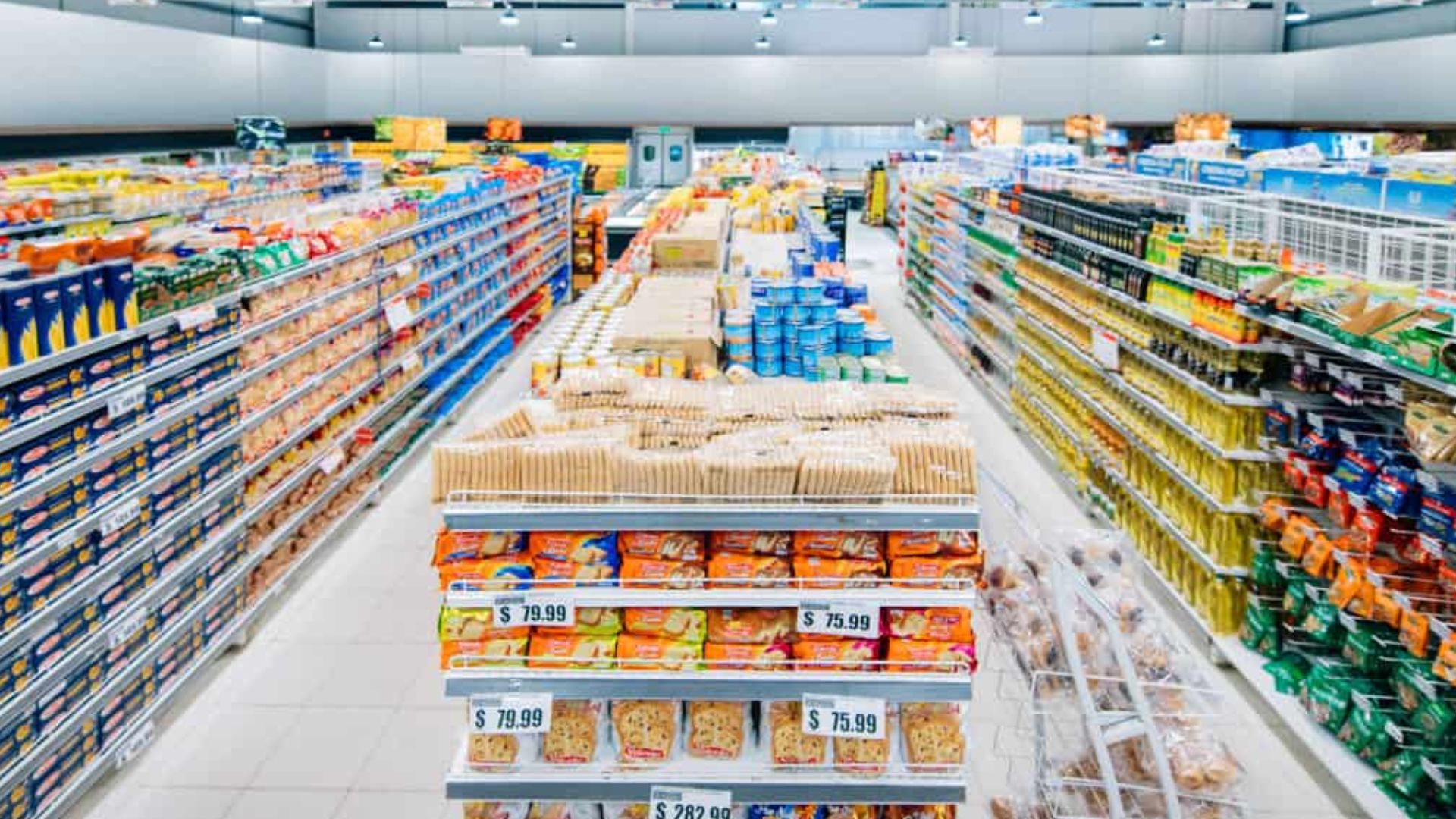The global CPG market is expected to reach USD 4,235.01 billion by 2030, growing at a CAGR of 4.2%. In such a competitive space, staying ahead requires more than just having quality products on store shelves. It necessitates a precise measurement of in-store performance, ensuring that products are well-positioned and readily available when customers are ready to make a purchase.
Through accurate measurement, CPG brands can gain valuable insights into their shelf performance, which can directly influence sales and customer satisfaction. With the retail environment constantly changing, brands that have strong measurement strategies can quickly adjust to meet customer expectations and stay ahead.
At a Glance:
- Critical Metrics: Key metrics like sales volume, brand penetration, and product placement efficiency on the shelf are crucial for tracking in-store performance and competitiveness.
- Advanced Analytics: Predictive, prescriptive, and descriptive analytics offer insights into marketing optimizations and consumer engagement, focusing on retail execution.
- Data Sources: AI and machine learning enhance measurement accuracy by tracking shelf availability, planogram compliance, and promotions in real time.
- Technology Integration: Integrating online and offline data helps refine omnichannel strategies for a seamless consumer experience and better sales outcomes.
What is CPG Measurement?

CPG measurement refers to the process of tracking key metrics that indicate how well a product is performing in the store. Metrics such as product availability, shelf positioning, and sales performance provide critical insights that shape marketing strategies.
In today’s fast-paced retail environment, strong measurement strategies are essential to ensure products meet customer expectations and outpace the competition. Accurate measurement enables brands to respond quickly to shifting market dynamics, ensuring products are always in the right place at the right time.
What are Key Metrics in CPG Measurement?

The success of any CPG brand in the market depends largely on how well it tracks and optimizes its key performance indicators (KPIs). These KPIs serve as a guide for assessing retail execution and help measure performance across various aspects, including product availability and promotional success.
Without well-defined KPIs, a CPG brand would have a difficult time determining which strategies are working and what needs to be adjusted.
To improve retail performance, CPG brands should focus on a few key metrics. These help assess product availability, placement, and customer satisfaction.
1. Sales Volume and Market Share
Sales volume is a straightforward but essential metric that directly reflects product demand. Tracking sales volume helps brands identify which products are moving quickly off shelves and which may need more attention or promotional support.
Market share tracks how much of the total sales in a category a brand has, helping you gauge your position compared to competitors. A larger market share means a stronger position, but smaller brands can use this data to increase visibility and market share.
2. Brand Penetration
Brand penetration refers to the number of stores or locations where a brand’s product is available compared to the total number of retail outlets. Greater penetration increases visibility, which can result in higher sales opportunities.
Tracking brand penetration ensures that products are available at the right retail touchpoints, improving accessibility and driving consumer purchase decisions.
3. Consumer Loyalty and Retention Rates
Consumer loyalty is key to long-term sales success. Brands that can retain customers over time typically enjoy higher lifetime value from each customer. Recent studies show that over 70% of consumers feel more valued when brands offer loyalty programs.
Monitoring consumer loyalty and retention rates allows CPG brands to understand how well their products connect with customers, helping them focus on customer satisfaction and retention strategies.
4. Product Placement Efficiency
Product placement directly impacts consumer decision-making. Product placement efficiency checks how effectively products are placed on the shelf to maximize visibility and sales. When products are placed according to a planogram and positioned at eye level or in high-traffic areas, they’re more likely to get noticed and bought.
Using CPG measurement tools, brands can assess placement effectiveness and adjust strategies to optimize in-store execution.
What are Advanced Analytics Techniques for CPG Measurement?

In an industry where consumer preferences can shift rapidly, these insights help CPG brands act proactively. This ensures long-term success and market relevance.
By using advanced analytics techniques like predictive, prescriptive, and descriptive analytics, CPG brands can get a deeper understanding of the “why” behind their numbers and use those insights for future strategies.
1. Retail Execution with Predictive Analytics
Predictive analytics uses historical data to forecast future demand. This helps CPG brands avoid stockouts and excess inventory. By analyzing sales trends and market conditions, brands can predict demand spikes or shortages.
For example, predictive models can alert companies when a product is likely to sell out. This enables them to adjust production or distribution early. As a result, products remain available when needed, keeping sales momentum steady.
2. Using Prescriptive Analytics for Marketing Optimizations
Prescriptive analytics builds on predictive data by recommending specific actions, such as pricing changes, promotional strategies, and product placement adjustments in retail spaces.. Analyzing multiple factors helps brands make informed decisions to optimize marketing efforts in real-time.
For example, if a demand surge is predicted, prescriptive analytics may suggest targeted promotions or shifting budgets to high-performing channels. This improves marketing ROI.
3. Role of Descriptive Analytics in Understanding Consumer Behavior
Descriptive analytics helps CPG brands understand consumer behavior by analyzing past data to uncover specific patterns. These may include product preferences, purchasing triggers, and seasonal shifts. It goes beyond general trends by identifying factors that directly influence consumer decisions. This could be pricing sensitivity or a response to promotions.
These insights allow brands to refine their strategies, optimize product assortments, and improve in-store execution. As a result, brands can run more targeted and effective future campaigns.
What are Data Sources for CPG Measurement?
CPG measurement relies on a variety of data sources to provide comprehensive insights into in-store performance. These sources include transaction data, inventory levels, and consumer interactions, enabling brands to gain a complete understanding of product availability, consumer preferences, and market trends.
The quality of data plays a key role in ensuring that the metrics derived are accurate and actionable. Brands must integrate multiple data streams to make well-informed decisions.
1. Point-of-Sale(POS) Data Collection
POS data is one of the most valuable sources for CPG measurement. It provides real-time insights into product sales, stock levels, and consumer behavior. With accurate POS data, brands can track on-shelf availability and pinpoint which products are in demand.
2. Consumer Surveys and Feedback
Consumer surveys and feedback give valuable context to the quantitative sales data. They help brands understand customer preferences and satisfaction, providing additional insight into product performance.
3. Loyalty Programs and CRM Data
The loyalty programs and CRM data show the track of consumer interactions with a brand over time. This data reveals trends in repeat purchases, customer preferences, and overall brand loyalty, helping brands adjust strategies for long-term retention.
4. Third-Party Market Research Reports
Third-party market research reports provide external insights into industry trends, competitor performance, and market conditions. These reports complement internal data by offering a broader perspective on the competitive environment.
What is the Role of Technology and Tools in CPG Measurement?
Advancements in technology have transformed how CPG brands collect, analyze, and act upon their data. From AI-powered tools for real-time shelf monitoring to automation for more efficient data collection, technology is at the heart of modern CPG measurement.
By utilizing technology-driven measurement tools, brands can optimize their retail execution and gain deeper insights to refine their strategies.
- Software for Data Analysis and Reporting: Advanced retail execution software enables brands to collect, analyze, and shelf report data efficiently and effectively. These tools automate data processing, saving time and ensuring that the insights derived are accurate and actionable.
- Automation Tools in Data Collection: Automation tools help collect shelf data, track inventory levels, and measure planogram compliance with minimal human intervention. For example, AI platforms like ShelfWatch track shelf availability and compliance, offering real-time insights to improve decision-making.
- The Use of Artificial Intelligence and Machine Learning: AI and ML have taken CPG measurement to the next level by offering predictive and prescriptive insights. These technologies help brands forecast demand, optimize shelf placement, and make better marketing decisions with real-time data.
- Integrating Tools with Marketing Platforms: Integrating CPG measurement tools with marketing platforms ensures seamless data flow between systems. This integration lets brands make adjustments to campaigns in real time for better results.
What Are the Key Challenges in CPG Measurement?
Despite its benefits, CPG measurement has its challenges. Overcoming these hurdles requires the right tools, processes, and a strategic approach to measurement.
Below are a few challenges in CPG measurement.
- Data Accuracy and Quality Issues: One of the most significant challenges in CPG measurement is ensuring that the data collected is accurate and of high quality. Inaccurate data can lead to poor decisions and missed opportunities.
- Integration of Multi-Source Data: CPG measurement often requires data from multiple sources, such as POS systems, loyalty programs, and third-party research. Integrating this data effectively is challenging but crucial for a complete view of retail performance.
- Adapting to Rapid Market Changes: The retail environment is always evolving. CPG brands must remain flexible and ready to adapt to changes in consumer behavior, competition, and market conditions.
- Privacy and Security Concerns in Data Management: As data collection becomes more sophisticated, privacy and security concerns grow. Brands must handle consumer data responsibly and comply with relevant regulations.
What Are the Best Strategies for Effective CPG Measurement?
For measurement to be effective, CPG brands must set clear goals, track KPIs regularly, and collaborate across departments. Establishing clear goals ensures that measurement efforts focus on what matters most.
- Set Clear, Achievable Goals: Clearly defined goals are essential for success. These should align with your business objectives and be tracked consistently.
- Continuous Monitoring: CPG measurement is an ongoing process. Brands need to monitor KPIs in real time and adjust strategies quickly based on insights.
- Collaborative Approach: A collaborative approach across departments ensures that measurement insights are acted on throughout the organization. This leads to better overall success.
- Invest in Training: Investing in training helps all levels of staff engage with performance data. This creates a data-driven culture and better alignment across departments.
How Can Brands Adapt to Shifts in CPG Measurement?
As the world becomes more interconnected, CPG brands need to keep up with changing consumer habits and technological advancements. Online sales of CPG products have surged by 10% over the past year, outpacing the 2% growth seen in physical retail. This shows how crucial e-commerce has become for CPG brands.
This shift requires marketers to be agile and responsive, aligning their strategies with the fast-paced nature of digital interactions.
1. Omnichannel Mastery
Omnichannel mastery becomes increasingly critical as customers seamlessly navigate between in-store and online environments. With 86% of CPG sales now being omnichannel, it’s crucial to have a measurement system that looks at the whole customer journey.
A unified approach helps accurately track results and improve the customer journey, providing a complete view of consumer actions.
- Integrating Online and Offline Metrics: By combining data from both digital and physical stores, brands can see the full path customers take before making a purchase.
- Cross-Channel Attribution: Understanding how each touchpoint contributes to a sale is essential. This helps brands allocate resources to the right channels for maximum impact.
2. Voice Commerce and Smart Devices
With the rise of voice commerce and smart devices, measurement gets a bit more complicated. Brands must develop robust methods for tracking engagement, conversion rates, and share of voice across new platforms.
While they offer great opportunities, these channels also require fresh strategies for measuring success.
- New Platforms: Devices like Amazon Alexa or Google Home are shaping consumer decisions, especially for CPG products. Brands need updated methods to measure their impact on sales.
- Tracking Conversions via Voice: Since voice commerce lacks traditional click-through or visual indicators, brands need innovative approaches to track sales from voice interactions.
As CPG brands explore new platforms and optimize their measurement strategies, integrating advanced tools can further enhance their ability to track and improve performance across these emerging channels.
How ParallelDots Can Enhance CPG Measurement with AI-Powered Insights?
ParallelDots provides a suite of tools designed to help CPG brands optimize retail execution through AI-driven insights. With ShelfWatch, brands can track shelf availability, ensure planogram compliance, and measure promotional success—all in real time.
By using AI and machine learning, ParallelDots makes CPG measurement faster, more accurate, and easier to act on. This allows brands to make informed decisions that improve product visibility and boost sales.
Here’s how ParallelDots can help:
- AI-Driven Shelf Monitoring: ParallelDots ShelfWatch platform scans store shelves in real-time, offering visibility into product availability, placement, and pricing. This ensures products are always correctly placed, reducing stockouts and maximizing visibility for increased sales.
- Planogram Compliance Optimization: Using AI, ParallelDots ensures products are placed according to the planogram, identifying deviations and enabling immediate corrective actions. This helps brands maintain optimal shelf organization and increase product visibility.
- Promotion Success Monitoring: By integrating OCR technology, ParallelDots tracks in-store promotions to ensure correct implementation and help brands avoid costly mistakes during promotional periods. This also ensures that prices are accurate and promotions are visible, driving sales during high-traffic moments.
- Actionable Store-Level Insights: ParallelDots provides detailed, real-time performance metrics for individual stores, including product availability and compliance status. This empowers CPG brands to make swift, data-driven decisions to optimize sales execution and address issues at the store level.
- Seamless Integration with Existing Systems: The platform integrates with existing ERP and POS systems, providing a unified view of retail performance across multiple channels. This integration ensures sales teams have access to real-time insights, enabling better decision-making and streamlined operations.
For CPG brands looking to enhance their in-store performance, ParallelDots AI-powered insights can optimize operations, improve measurement accuracy, and drive better business outcomes. Request a demo today to see how ShelfWatch can transform your retail execution.
FAQs
Q. What is CPG also known as?
Ans. CPG stands for Consumer Packaged Goods, referring to products that are sold quickly and at a relatively low cost, such as food, beverages, toiletries, and cleaning products.
Q. What is the purpose of a CPG?
Ans. The purpose of a CPG is to offer essential everyday products that consumers purchase regularly. These goods are typically mass-produced, marketed, and distributed to meet consumer demand efficiently.
Q. What is a CPG model?
Ans. A CPG model refers to the business framework used by companies in the consumer goods sector. It includes processes for product manufacturing, distribution, marketing, and sales, often focusing on volume and brand loyalty.
Q. What is CPG analysis?
Ans. CPG analysis involves evaluating market trends, sales performance, and in-store execution to help businesses make data-driven decisions on product development, marketing strategies, and retail optimization.


